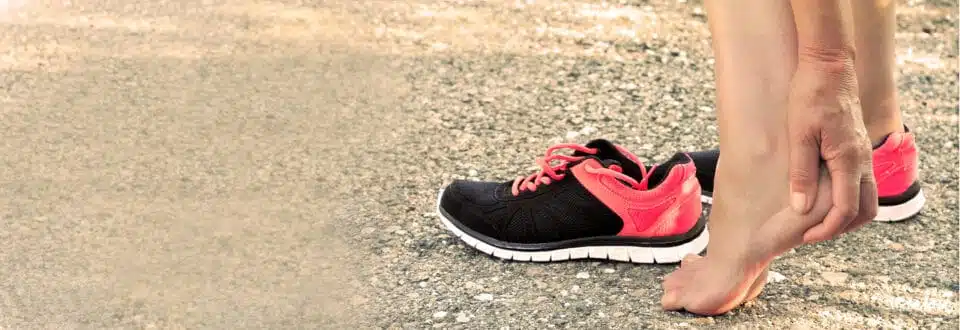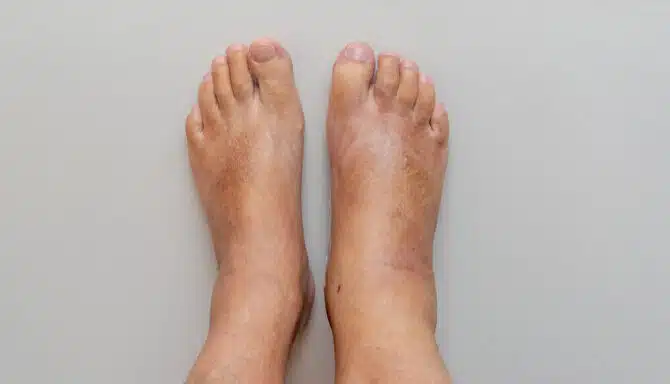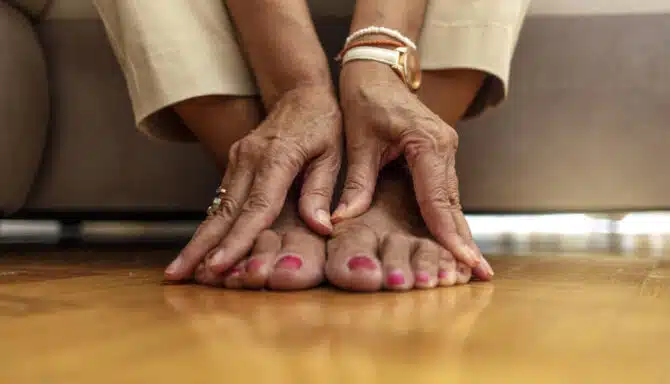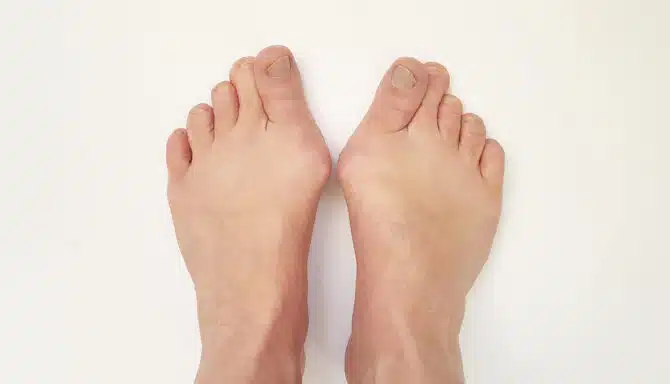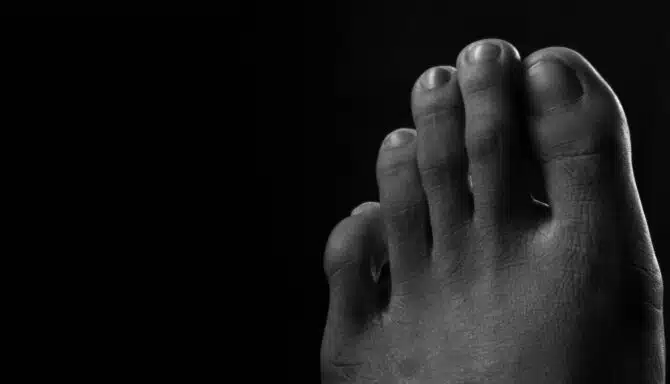What is a Heel Spur?
The human body is a complex and magnificent system that adapts and learns, continuously finding ways to build and strengthen itself through its experiences. One example of this is our bones’ response to stress.
Soft tissues such as ligaments and tendons insert themselves into bones; ligaments connect bone to bone while tendons connect muscle to bone. When the area of insertion undergoes injury or inflammation from stress or strain of these soft tissues, the bone may respond by depositing new bone on existing bone. This is the bone’s way of fortifying itself.
A heel spur is just that. It is a bony protrusion or growth from the underside of the heel bone that forms over time due to repetitive muscular and ligament strain from activities such as walking, running, and jumping.
Contrary to popular belief, a heel spur is simply the reaction to the problem at hand, and not necessarily the cause of your pain. In fact, most heel spurs are asymptomatic.
It is often associated with a condition known as plantar fasciitis, which is the inflammation of the fibrous tissue that connects the heel bone to the ball of the foot.
Rather than the heel spur itself being the culprit, more often than not, it is the associated soft tissue injury such as plantar fasciitis that causes sharp pain at the heel with the first steps in the morning or with initial steps after rest. Some report the pain turns into a dull ache and comes back with increased activity throughout the day.
Am I at Risk?
You can increase your risk of developing a heel spur and associated heel pain due to soft tissue injury by:
- wearing unsupported shoes
- not addressing current foot issues
- abnormal gait
- poor foot posture
- increased time on your feet
- vigorous sports or activities
- weight
All these factors put high stress and strain on the soft tissues of your feet, specifically the plantar fascia.
How do I Manage the Pain?
Heel spurs are managed by rest, exercise, custom foot orthotics, supportive footwear, a night splint, over-the-counter medications such as ibuprofen, and/or cortisone injections.
Rest and exercise are both highly recommended when dealing with a heel spur and associated soft tissue strains. Stretching the muscles and tendons of the foot will reduce tension and resistance training will help to strengthen them.
Calf stretches against the wall and/or on a step are particularly helpful. Remember to hold your stretch for 15-30 seconds. Repeat the exercise 10 times on each leg and do this set a couple times throughout the day to get the best results.
Look for shoes that have a cushioned sole with arch support rather than a shoe that is completely flat.
A good shoe will also have good torsional stability, a firm heel counter, and a roomy toe box. In addition, for indoor shoes, opt for sandals or slippers with a cork foot bed that has arch support and straps around the forefoot, midfoot, and ankle.
Wearing a night splint while you sleep may also help to keep the plantar fascia elongate and therefore deplete tension.
around the forefoot, midfoot, and ankle. Wearing a night splint while you sleep may also help to keep the plantar fascia elongated and therefore deplete tension.
Talk to your local chiropodist for advice on custom foot orthotics. A custom insole will support your foot in all the right places and correct any harmful compensations or abnormal gait patterns. Furthermore, a heel pad may be added to provide additional cushioning or a horseshoe pad to offload a specific localized area of pain on the heel.
If you are in an immense amount of pain, resulting in limitations to your mobility, talk to a Toronto foot specialist about cortisone injections, which may provide temporary, but effective relief. You can get up to three cortisone shots per year.
If conservative measures fail to relieve your pain within a year, surgery to either release the plantar fascia or remove the bone spur may be indicated to restore quality of life.
What Happens if it’s Not Treated?
Unfortunately, a heel spur or any bone spur for that matter is permanent and cannot be removed without surgery. However, the pain associated with a heel spur will likely worsen and become chronic if you do not seek treatment to address the soft tissue injury.
This can lead to changes in your gait to accommodate and compensate for the pain, resulting in a limping gait and secondary injuries to the hip and knee joints. If you avoid walking or activity all together, the chances of weight gain are high. On the other hand, most of individuals with heel pain will experience resolution when treated using conservative methods.
When Should I See a Foot Specialist?
Any kind of foot pain is a valid reason to see a general physician, licensed chiropodist, or podiatrist for a consultation.
Chiropodists or podiatrists are primary health care professionals who specialize in the assessment, management, and prevention of dysfunctions, disorders, and diseases of the foot. The sooner you see an appropriate health care practitioner for heel pain or a heel spur, the sooner you will experience relief of your pain.
What Can I do to Prevent Spurs?
To help prevent heel spurs you can reduce injury to the heel bone by wearing supportive footwear. Always remember to stretch before and after sport activity, and gradually increase your level of activity rather than engaging in too much activity too quickly.
Pay attention to the shape and movement of your feet to detect any anomalies with your gait pattern, and avoid long periods of standing.
You can also increase flexibility in your calf and plantar fascia with daily stretches, avoid walking barefoot on hard surfaces, and maintain a healthy body weight.
How Can I be Sure it’s a Heel Spur?
A bone spur can only be definitively diagnosed with diagnostic imaging such as, x-ray or ultrasound. If you have a very localized area of pain on your heel(s) and experience pain with your first steps in the morning, talk to your doctor about these tests to determine if you have a bone spur or not.
For a full foot assessment and treatment for heel pain, book an appointment with one of our Toronto Licensed Chiropodists at Feet First Clinic.
